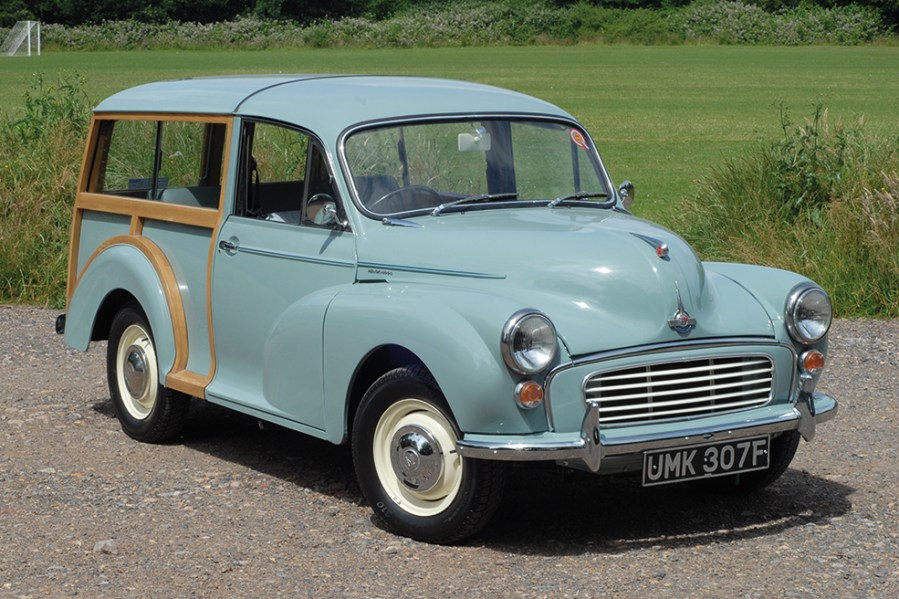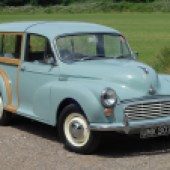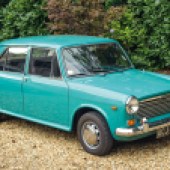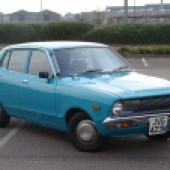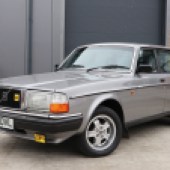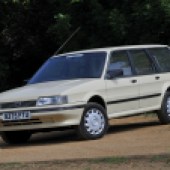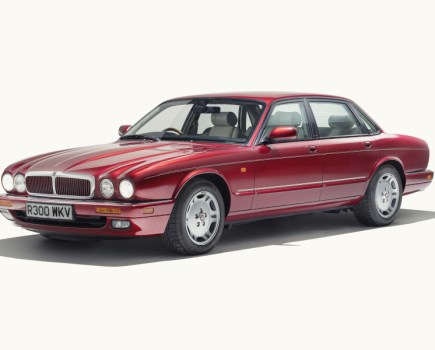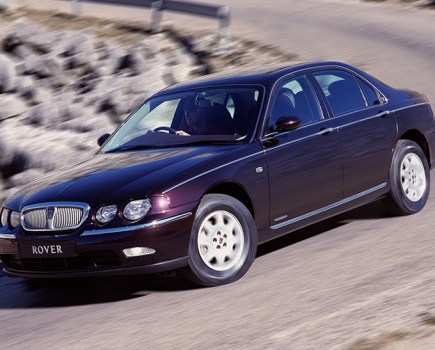The typical family car has evolved heavily over the past 60 years and beyond. Here, we look at the success stories from years gone by
The evolution of the family car has been a long and fraught one. Cars like the BMC ADO16 – better known as the 1100/1300 range – were among the first to identify a particular need for a family friendly and spacious yet inexpensive runabout, and it was cars like this that effectively set the blueprint for others to follow. As it the ADO16 turns 60, it’s time to consider not only its impact but the evolution of the genre it represents.
As the 1950s became the 1960s, arguably the ideal template for the family car had been set in the form of the Morris Minor Traveller (above). No longer than the saloon upon which it was based, it nevertheless offered more space inside for people, dogs and other family clutter. In the pre-seatbelt days of the 1960s, the typical family would simply shove children and bags in the back until the wood split. The 1960s customer wanted something more sophisticated though, and the answer lay in the form of the Mini – or rather, it would if the Mini were just a little bit bigger and a little more stylish.
The Pininfarina-penned BMC 1100 was therefore the ideal solution. Available as everything from an entry level Austin to a well-trimmed Vanden Plas, the 1100 and subsequent 1300 showed the British buyer that it was possible to have an up-to-date and affordable family car that still looked good. With front-wheel drive and the same compact engine packaging as the Mini, the 1100 range offered buyers a full four-seater that was four inches shorter than a Ford 100E. Ford’s closest competitor to the 1100 was the Anglia – but with just two doors, it wasn’t as practical. Ford’s larger Classic wasn’t selling as well as it had hoped, so like BMC it would seek Italian influence for its own world beater.
That car became the Ford Cortina – sharply styled and using the same basic mechanicals as existing Ford models, it sold the dream of style to the family man wary of BMC’s front-wheel drive and interconnected Hydrolastic suspension. Its relative simplicity was also a boon for travelling salesmen; people who would have a car for work that could also be used to transport the family at the weekend. It became the only car to interrupt the BMC1100’s stronghold of the top spot in the new car sales charts during the 1960s – a position it would hold from 1972-1981 without a break.
By then the Mk3 Cortina had evolved and grown in size to replace both the Mk2 Cortina and the Corsair, with even more emphasis on the company car driver. Do well and the 1600L company car might become an XL, do really well and you might get into a GXL. The same hierarchy applied for the family man – your dad was doing well if he could afford a GXL, while the kids whose parents only drove a 1300 base might well have asked to be dropped off round the corner instead.
You can’t think of the British fleet market today without thinking of Ford and Vauxhall together – but the Mk3 had no real rival within the Vauxhall range. The FE Victor was an oddly sized halfway house between Cortina and Granada, and it would take the launch of the Cavalier to redress that balance. And Cavaliers were popular as family cars too, for all the reasons Ford had held the market’s top spot – simplicity, reliability and a decent dose of style.
The spec levels were there for all to see too – L, GL, GLS, markers of your success and therefore the desirability of your motor. But Vauxhall never quite hit the mark in the same way that Ford had – Britain’s membership of the EEC meant that cars from Europe now looked more affordable than ever before, and the increasing popularity of Japanese cars also made for challenges in the top ten. The Datsun Sunny 120Y was the first Japanese car to challenge the British big boys, owing to its mix of tempting price, reliability, and a long list of standard features. A Morris Marina might come with windows, but in a Datsun the rear one would be heated, and you could tune into House Party on Radio 2 as standard.
The more well-to-do motorists of the era might have eschewed the Cortina for the smaller but more aspirational Volkswagen Golf or Citroën GS – in this halcyon era, European cars still had the cachet of something expensive and exclusive, but the cheaper prices afforded by that EEC membership meant that they were more attainable. It was a dual pronged assault by Europe and Japan that meant that for the first time ever, 1979 saw the majority of car sales in the UK falling to imported models.
Cars like the Volvo 245 and subsequent 240 estate might have been more expensive than the average Cortina – but for the family man with the standing to have afforded something like a Rover SD1 or a Ford Granada they offered near-Mercedes build quality and a sensible stolidity that meant that they often outlasted a family’s need to own such a vehicle. Toward the end of their lives, while old hat, they offered excellent value against cars like the Rover 800 and Vauxhall Carlton that both offered less space. The later 740 and the subsequent front-wheel drive revolution would improve Volvo’s somewhat traditional image, without sacrificing any of the practicality that had earned the trusty 240 its hard-won reputation.
But it wasn’t all bad for Britain in the 1980s. This would be the period in which British Leyland shed its confused mid-market range of the 1970s for something fresher and cleaner. In practical terms this meant that the Allegro, Marina, Princess and Maxi would all be replaced with a slimmed-down model family, dubbed Maestro for the compact hatchback and Montego for the larger saloon and estate.
BL – by now Austin Rover – had learned from the Ford model and ex-Ford personnel that while the customer might like the idea of innovation, it’s tried-and-tested models that sell best. The seven-seat option made the Montego estate in particular popular among families of a certain size, as an option that neither the Ford Sierra nor the Vauxhall Cavalier could match. By the time Rover Group (as it became) launched the diesel in 1989, the Montego was seen by many as the ideal budget alternative to an MPV.
MPVs were the new craze, sparked in Britain by the joint arrival of the Nissan Prairie and the Renault Espace. Nissan’s importers, however, suffered a bit of an own goal by requesting that Japan only supply five-seat versions of its new tall estate car rather than those with seven, as it felt that the latter would sell poorly. That left the Renault Espace as the only real trendsetter in this marketplace from launch. Created by Matra while a part of Chrysler Europe, rejected and subsequently sold to Renault, the Espace offered one box styling sat atop a Fuego drivetrain.
Looking in silhouette like a van, it offered individual chairs for seven occupants – chairs that could swivel, recline, make a bed, and generally do anything that the typically active young family or travelling businessman might want from his car. The Fuego underpinnings made it reasonably quick, and the plastic body meant it didn’t feel quite so unwieldy as a van in the bends. As a halfway house between a conventional estate car and a minibus, Renault seemed to have cracked it – spawning multiple imitations over the years and giving rise to the mini-MPV category in the mid-1990s when Renault invented the Mégane Scenic as a more compact Espace alternative.
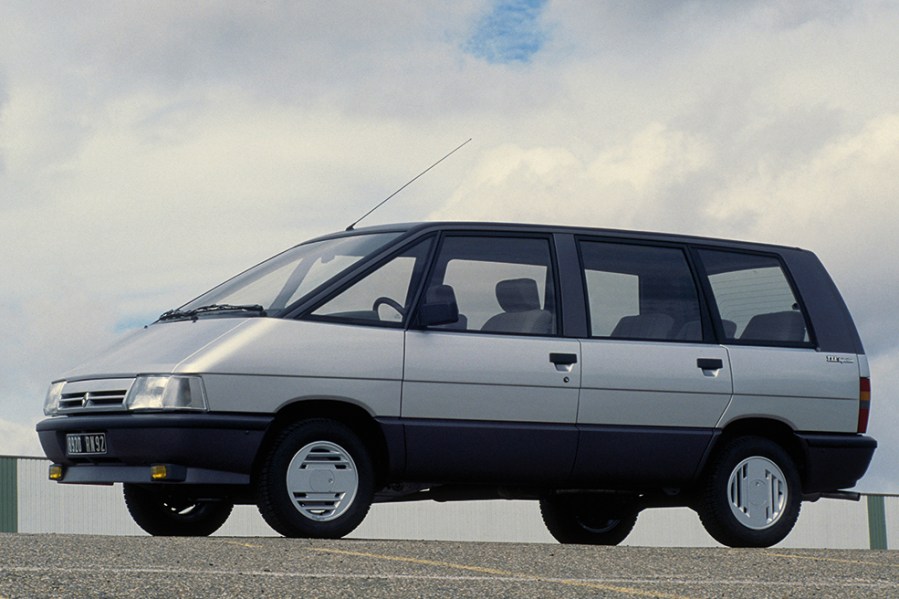
By the 1990s though, car buyers had become rather more discerning. Fleet buyers were starting to work out that the higher residuals attached to executive motors meant that they would typically cost less than a Mondeo or a Cavalier over a three-year period, and the availability of finance deals meant that the man on the street might legitimately now consider a car like the BMW E36 3 Series as a viable alternative to a Renault 21 as a family car. As long as he stuck to the agreed mileage, the cost over a typical lease period would be as beneficial to him as it was to companies buying cars like this by the thousand.
The launch of the Ford Mondeo wouldn’t change things – it might have offered Ford’s first front-wheel drive chassis to handle nicely underneath a swish new shape, but the Ford badge simply didn’t offer the panache of BMW. It would take another 10 years for the BMW 3 Series finally to outsell the Ford Mondeo, but the rot had already set in for mainstream manufacturers. This would be an attitude that would shape the buying public in its decisions for decades to come, and even today the monthly finance payment of a car is more important to the average consumer than any nominal list price it might have to buy it outright.
One benefit for the consumer was that by moving to a model where the list price mattered less, it was possible for people of almost any income to be able to afford the sort of car that came with extras as standard. From the 1990s onward, the hierarchy that had been a clear part of the family car from the 1960s onwards began to assume less importance – who cared if you could only afford to buy a Mondeo LX, when the world of finance would permit a BMW with alloys and air conditioning? The things which had been a badge of rank slowly started to become a leveller of men, with wheel trims and black plastic bumpers vanishing from options lists as quickly as the vinyl roof had done a generation before.
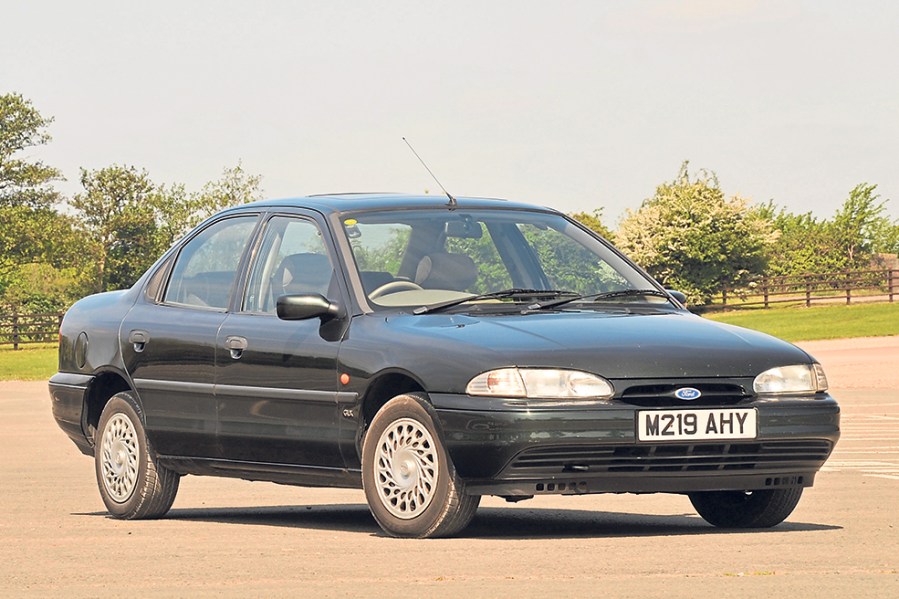
In a world where just £20 per month separates the Ford Focus driver from the Audi A6 driver, the badge on the bootlid has come to speak more of your personal preferences than of your income – and with a vast array of crossovers, SUVs, MPVs and other vehicle types targeting families, the conventional saloon and estate are set to become things of the past as we move further into the 21st century. Kids now will never know the joy of that GLS, Ghia or Injection moniker being a true statement of status.
In the last 10 years or so the car market has seen a shift away from the conventional family saloon – a trick that both the 4×4 and MPV marketed attempted, with neither successfully outdoing the saloon at its own game. But the advent of cars like the Nissan Qashqai meant that families could enjoy the image and perceived solidity of an all-wheel drive vehicle with the running costs of a family hatchback. These cars were marketed as a premium proposition, albeit one that through controlled residuals would be incredibly tempting as a financed contract hire conveyance.
The Qashqai sparked a trend that has seen manufacturers discontinuing previous favourites – Ford has axed the Mondeo, while its Puma SUV has taken the place of the long-standing Fiesta. Vauxhall’s Insignia is no more, and even mini MPVs like the Renault Scenic are becoming obsolete in favour of cars like the Kuga, the Grandland and the Kadjar. As the car world continues to turns to electrification, this higher-body line will prove useful – plenty of space in the floors for battery packs – and the once rarefied high stance of an SUV will become par for the course at the school gates.

